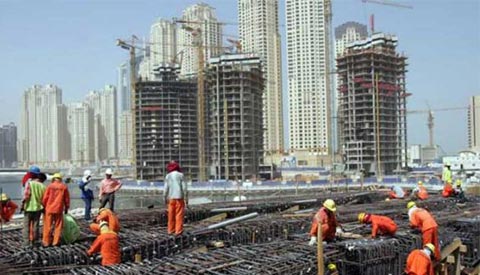|
India is rapidly growing, both in population and economy. Cities are facing high and increasing population densities, leading to a surge in new construction. Unfortunately, in the rush to build a modern India, the quality of life for residents in these new buildings is often overlooked. There is an urgent need to integrate building biology and sustainability to improve living conditions now and in the future. India has the largest population in the world. One out of six people on this planet lives in India. Over 50% of the population is under 25, and more than 65% is under 35. About 72.2% of the population lives in rural areas, while 27.8% resides in urban centers. India is home to numerous ethnic groups, languages, and religions. |

| With a growing economy, there is a fast-rising middle class seeking better housing and comfort. According to the Centre for Science and Environment (CSE), about 70% of the buildings that will exist in India by 2030 still need to be built. This focus on rapid construction often overlooks the physical and mental health of the population. Resource mining for construction is depleting the earth, destroying ecosystems, and displacing native populations. These concrete buildings will eventually become waste, creating problems for future generations. | |
| Millions live in slums, lacking basic needs such as shelter, proper sanitation, clean drinking water, and education. This complex problem requires a multifaceted approach. Building biology, in collaboration with existing organizations, can help improve the quality of life in these areas. | |
|
India has a rich tradition of constructing healthy and sustainable homes. Building biology combines traditional wisdom with modern knowledge to create healthy and sustainable housing. Every region in India has developed unique methods for building with local materials, considering climate conditions. Vaastu Shastra, in its true form, is a valuable asset. Current building practices focus on cement, steel, glass, and aluminum, often leading to “sick buildings” and health issues. Building biology promotes using traditional materials to create healthier indoor climates and reduce environmental impact. This approach can design buildings that blend the best of past and future practices. Electrification in India is relatively recent, and many areas still lack reliable power. Poorly made electrical installations cause electromagnetic pollution, impacting health and well-being. The rapid growth of wireless technology adds to this issue. Building biology aims to create awareness and reduce electromagnetic pollution through better design and conscious use of technology. Family life is deeply valued in Indian cultures, but increasing material wealth and media influence can lead to social isolation. Impersonal neighborhoods and high-stress lifestyles can erode cultural and social connections. Building biology can design communities that promote social interaction and mental well-being. Education and awareness are essential for construction and healthcare professionals to recognize and address issues related to modern developments. The Center for Building Biology offers information and presentations on these topics. The IBN correspondence course, now available in English, provides a holistic approach to understanding the impact of our built environment. India presents many challenges for building biology. There is a need to raise awareness about the impact of modern building practices on health. Architects, builders, and designers must create healthy living environments. Research tailored to India’s unique climatic and cultural conditions is needed. More building biology professionals are essential to address these challenges and improve living conditions. |

